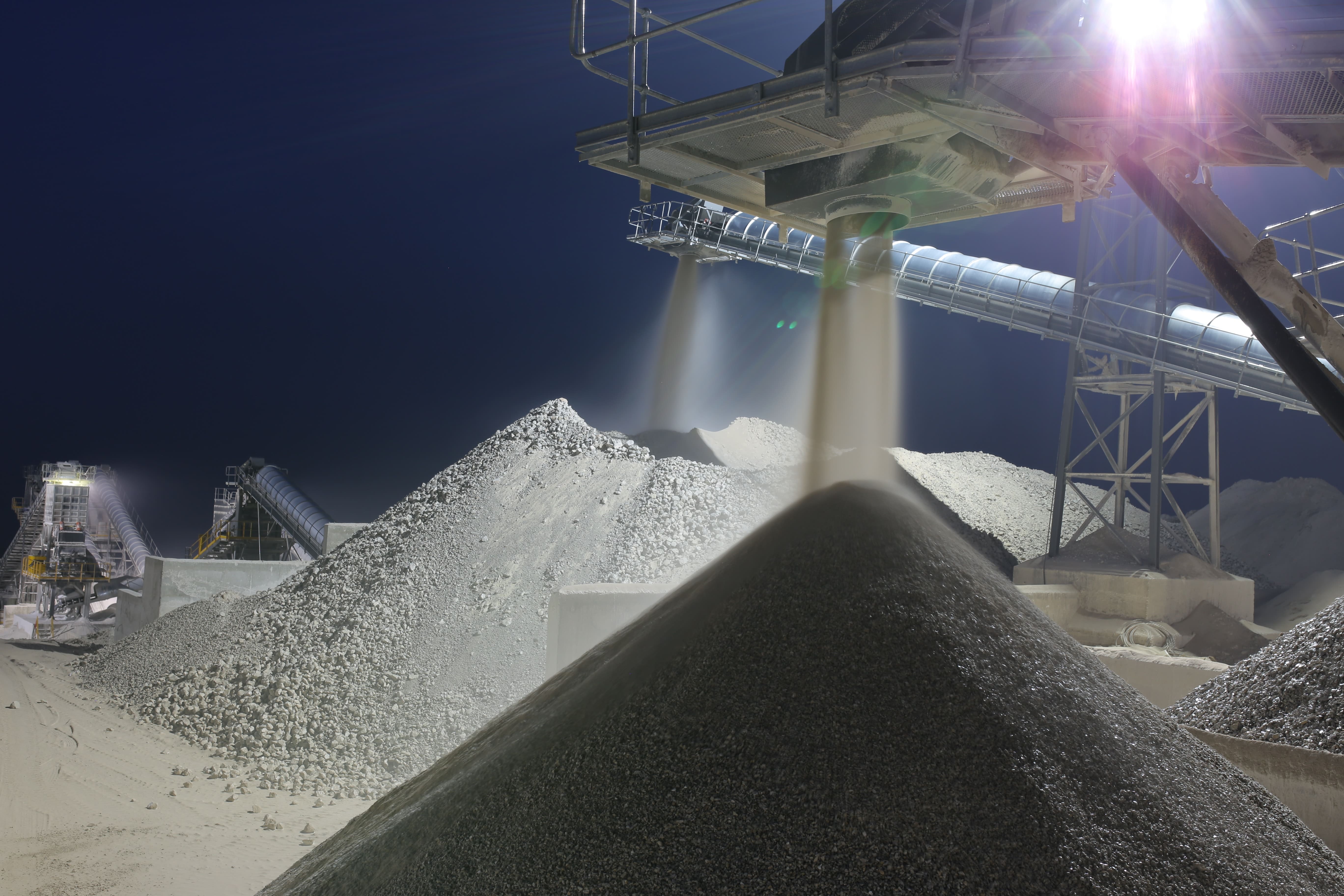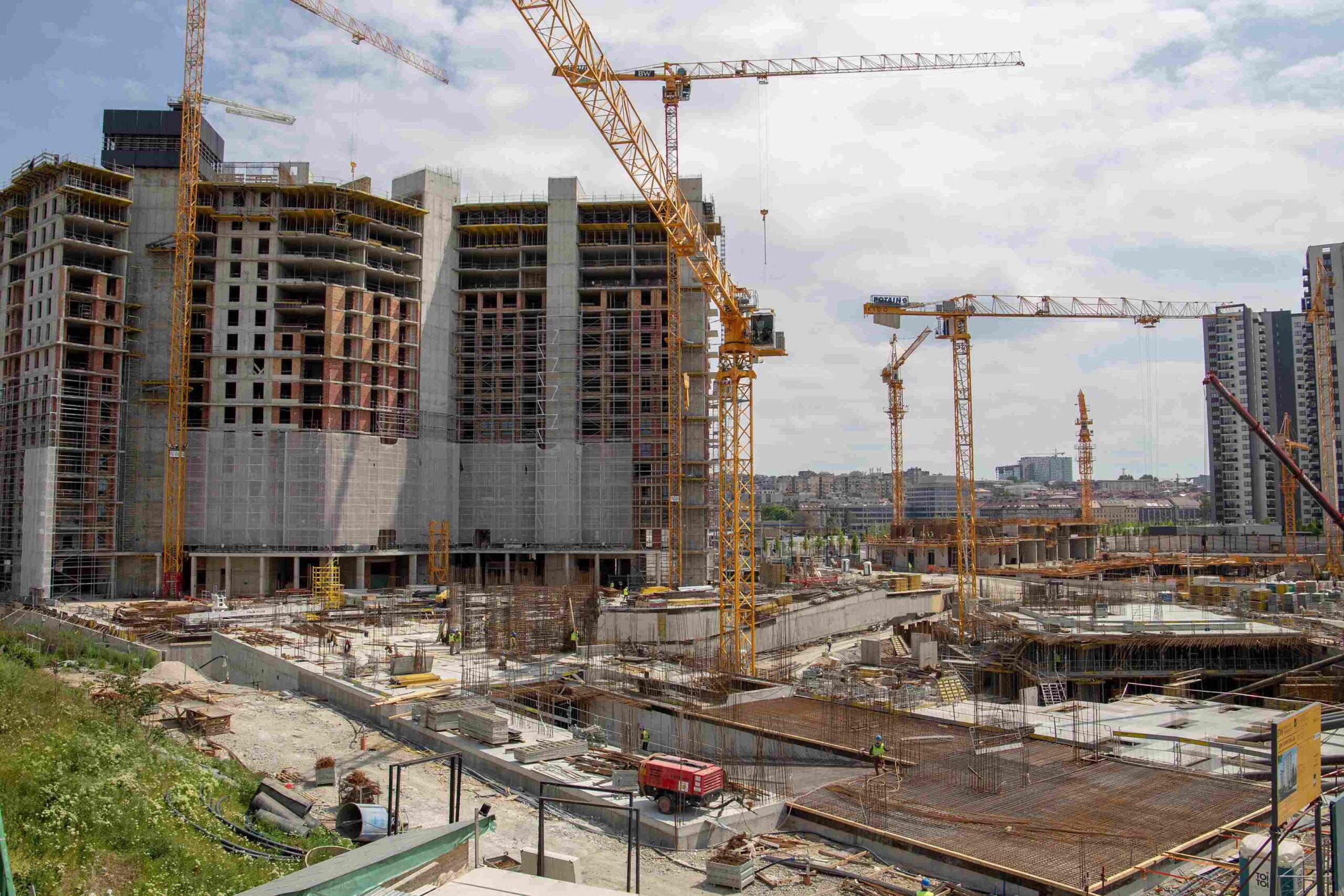What is Aggregate in construction?
Aggregates in building construction are small pieces of rock that are mixed with binding materials like cement, bitumen, lime, gypsum, or other adhesives to produce concrete or mortar. The aggregate offers the completed product volume, stability, resistance to wear and erosion, and other desirable physical attributes. Commonly used aggregates are crushed or broken stone, gravel, boiler ashes (clinkers), burned shale and burned clay. Types of aggregates include coarse aggregates and fine aggregates. Each type has several classifications based on shape, size, and type.
Types of Aggregate
The aggregates can be classified based on geographical location, shape, size, and weight:-
Classification based on Geographical location:-
Natural Aggregates
- Natural aggregates are rock particles that require little preparation before usage.
- It is available at the earth’s surface or can be evacuated from the ground, riverbed, and seabed.
- They have high compressive strength.
- Before using natural aggregates, they must be washed and cleaned.
- Examples of natural aggregates include sand, gravel, crushed rock, granite, basalt, etc.
Artificial Aggregates
- Artificial aggregates are man-made.
- Examples of artificial aggregates are broken bricks, burnt-clay aggregate, blast furnace slag, and synthetic aggregates.
Classification based on Size
Fine aggregates
- Particles that can pass through a 4.75 mm IS Sieve
- Mostly consist of sand and crushed/powdered stone.
- Pit sand, river sand, sea sand, and crushed sand are all types of fine aggregates.
Coarse Aggregates
- Particles do not travel. 4.75 mm IS Sieve
- Coarse aggregates have qualities such as strength, hardness, toughness, and durability.
- Crushed stone, gravel, shattered brick fragments, clinkers, and cyclopean aggregates are examples of coarse aggregates.
| S.no | Class | Size |
| 1. | Very Small | 80-150mm |
| 2. | Large | 80-40mm |
| 3. | Medium | 20-40mm |
| 4. | Small | 4.27-20mm |
Desirable properties of coarse aggregates for roads
- Strength
- Hardness
- Toughness
- Durability
- Shape of aggregates
- Adhesion with bitumen
Classification Based on the shape
Rounded Aggregates
- Available in seashore gravel
- A low ratio of water cement required
- Minimum 30-35% voids
- Poor interlocking causes weak bond strength
Angular aggregates
- Have the good interlocking capacity
- Maximum 38- 45% voids
- Less workability
- Good for maintaining the quality of concrete
Irregular aggregates
- Partly nature made shapes
- Maximum 35-37% voids
- Pit sands and gravel are examples of irregular aggregates
- Slightly higher bond strength than rounded
Flaky aggregates
- Less thickness
- Undesirable and have more voids, that need more slurry to bind them together
Elongated aggregates
- A length greater than 180% of a particle means dimension.
- lower workability
Properties of Aggregate
- Aggregate moisture content should remain steady.
- Free of harmful vegetable matter
- Flaky, angular, or elongated parts are not permitted.
- Should not include any substance that might corrode steel reinforcement.
- The aggregate must be firm, clean, and well-graded.
- Hardness, abrasion resistance, elastic modulus, and other characteristics are influenced.
Uses of Aggregate in Construction
- Aggregates are utilized in construction as both binding and independent elements.
- It increases the volume of concrete while decreasing the cost.
- They give dimension stability and accuracy.
- It reduces the shrinkage of the cement after drying.
- It is used as a basis and sub-base in road building.
- On railway tracks, somewhat thicker ballast is utilized to absorb vibration and secure the track.
- It is utilized in water and sewage treatment as a filtration agent.
- Fill material used for drainage, foundations, and backfilling.
- Used in Hardscaping.
- Aggregate in construction used in the production of concrete and cement
Advantages of Aggregate in Construction
- Less expensive
- Cost saving
- Easily available











